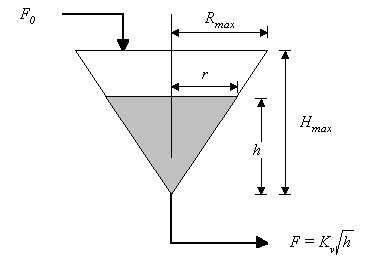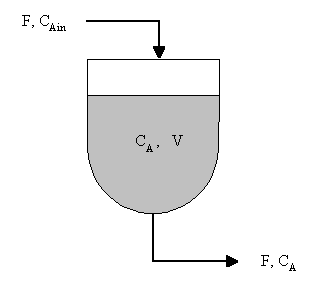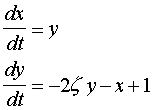
Figure 1. Conical Tank System.
Due Jan. 26, 2001 5pm
(For the simulations, you may use the spreadsheet to implement Euler methods. A tutorial (click here) is available in the web. You may also use Matlab or MathCad if you prefer.)

Figure 1. Conical Tank System.
Hmax = 10 ft
Kv =1 ft2 ft1/2/ s
h(0) = 2 ft
Fo =2 ft3/s
Changes in Variable Effect on Steady State Effect on Rate of Response As x increases :
Increases :
Faster :

Figure 2. Storage Tank at Constant Volume



